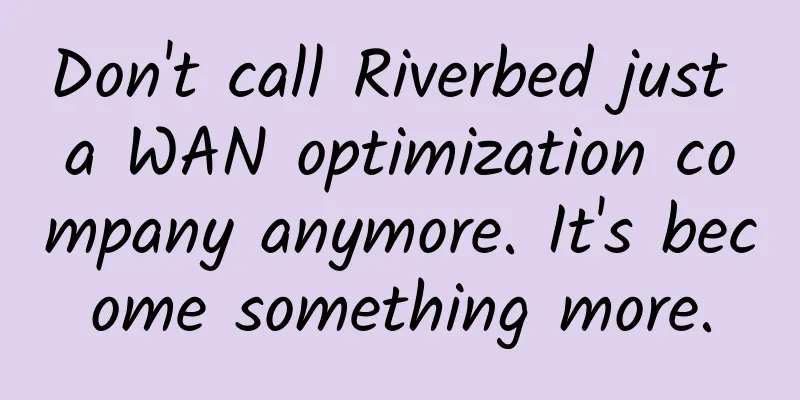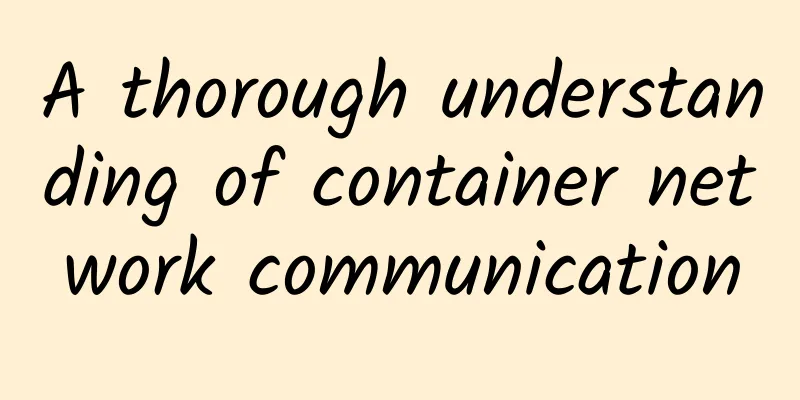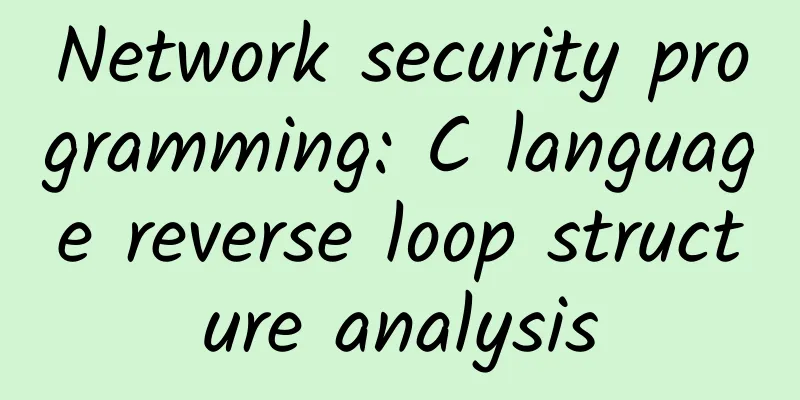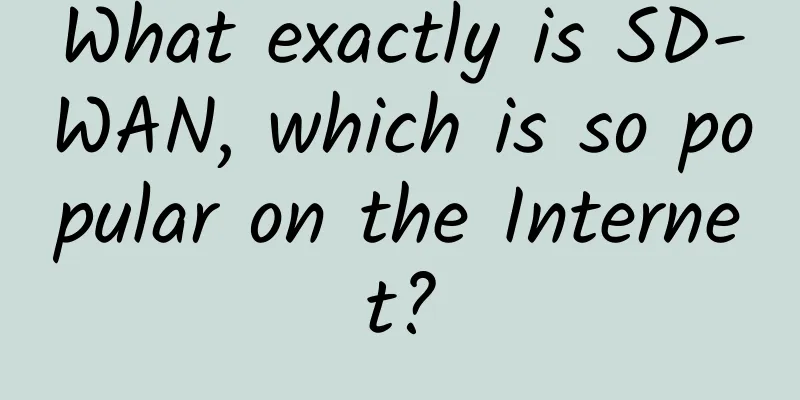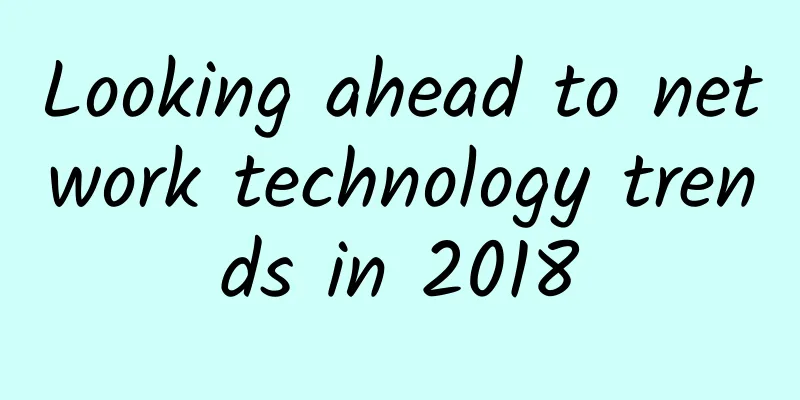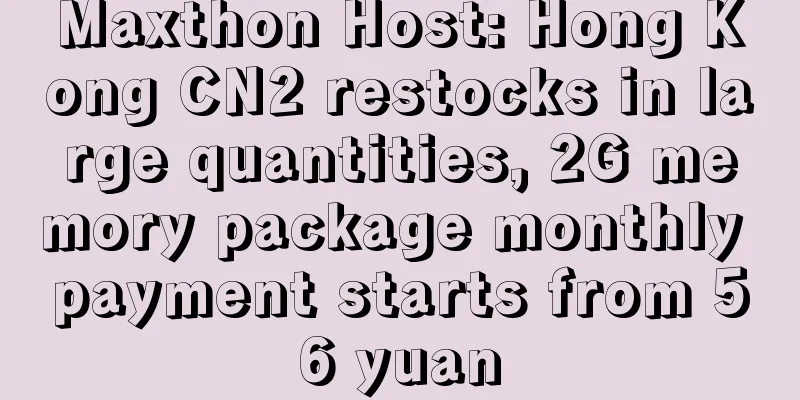5G landscape changes dramatically: Apple and Qualcomm reach a settlement, Intel withdraws its votes and leaves, Huawei remains unscathed
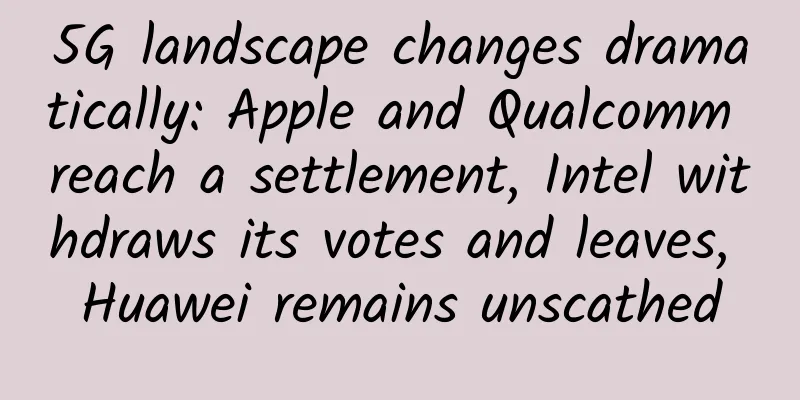
|
Overnight, 5G changed the world. First, Qualcomm and Apple announced a settlement, and at the same time, Intel decided to withdraw from the 5G group, which also means that Apple will not consider Huawei's proposal to supply 5G chips. According to the settlement agreement, Apple will pay Qualcomm a sum of money and a chipset supply agreement. Although the details have not been fully disclosed, Apple, which is in urgent need of 5G chips, has no choice. In short, today’s theme is: look forward/money first. Apple and Qualcomm settle Today’s big event starts with the settlement between Apple and Qualcomm. In the early morning of April 17, Qualcomm and Apple announced at the same time that both parties agreed to drop all lawsuits worldwide. The settlement includes an undisclosed amount of money from Apple to Qualcomm and a chipset supply agreement. Qualcomm said that as part of the agreement, the licensing period between it and Apple is for six years, which can be extended for two years. Qualcomm also revealed that in the agreement reached with Apple, Apple will pay a one-time compensation to Qualcomm, but the specific amount was not disclosed. According to previous litigation news, the lawsuit between Qualcomm and Apple involved a sum of up to billions of dollars. In the US ruling, Apple was required to pay Qualcomm $31.6 million in patent claim fees. Earlier, it was estimated that Apple paid Qualcomm up to $2 billion in patent fees each year. Therefore, the settlement amount may be more or less. After the settlement, Qualcomm was also encouraged by the capital market. Its stock price soared by more than 23% at the close, setting a record for a single-day increase in more than 19 years. Apple's stock price also rose slightly. But for Apple, this ending is somewhat embarrassing. After all, with the fact of 5G chip shortage at hand, our fate is not in our control. Apple under Cook’s leadership has to bow its head. Prior to this, Apple and Qualcomm had been in dispute over mobile phone-related patents for more than two years, and the core issue was that Apple believed that Qualcomm used illegal patent practices to monopolize the modem chip market. So in 2016, Apple abandoned Qualcomm and chose Intel. Apple stopped paying Qualcomm patent licensing fees and completely stopped using the company's chips in iPhone smartphones in 2018. In January 2017, Apple filed a $1 billion lawsuit against Qualcomm, accusing the chipmaker of overcharging for its chip products. Qualcomm then filed a counterclaim, claiming that Apple used its influence in the electronics business market to instruct Foxconn and other companies to refuse to pay royalties to Qualcomm. Qualcomm later further confirmed that Apple had completely removed Qualcomm's modem chips from the new generation of iPhone models released in September 2018, making Intel the supplier. The embarrassing thing is that when 5G came into being, it was Qualcomm, not Intel, that took the lead. Affected by this, when the Android camp has been calling for commercial use of 5G in 2019, Apple can only say awkwardly that 5G will not be launched until the iPhone after 2020. And recent reports show that Intel has missed the 5G development deadline again, causing Apple to miss even the 2020 commercial 5G launch. So if given a choice, Apple probably won't give in. And today, another big news was revealed at the same time: Intel has abandoned its 5G mobile phone business. Intel withdraws its ticket On one side, Qualcomm and Apple are negotiating a settlement, while on the other side, Intel is abstaining from voting. Intel announced on its official website that it will withdraw from the 5G smartphone modem business. After completing the evaluation of the use of 4G and 5G modems for PCs, the Internet of Things and other data-centric devices, Intel gave its own 5G strategy: As for 5G, Intel will not engage in research and development itself at present, but will continue to focus on investing in the development of 5G network infrastructure. Simple translation: You can take a look at investing, but I won’t do it myself. Intel CEO Bob Swan said Intel is excited about the opportunities in 5G and cloud computing for the Internet, but it has become clear that there are no clear profit opportunities and clear returns in the smartphone modem business. Swan believes that 5G remains a strategic focus for Intel. Intel has developed a series of wireless products and intellectual property rights, and is also evaluating its options to realize the value it has created, including opportunities in various data-based platforms and devices in the 5G world. At this point in time, Intel's abstention vote seemed a bit sudden. Two months ago, Sandra Rivera, head of Intel's network chip business, told the media that 5G modem chip samples will be shipped this year and consumer-grade products will be available in 2020. But it wasn't completely unexpected. Intel's 5G chip has Apple as its major customer, but Intel seems unable to meet Apple's previous requirement of a September 2020 release, and the outside world has repeatedly exposed the unfavorable progress. So a possible explanation is that major customer Apple lost patience and supplier Intel lost orders. So there is no need to waste any more effort. After all, in the 5G battle, there is Huawei in the east and Qualcomm in the west, both of them are very strong. Huawei once said: Apple 5G can come to me In this 5G confrontation, Huawei is the calmest one. In an interview with CNBC on Monday, Huawei founder and CEO Ren Zhengfei said Huawei would consider selling 5G chips to other smartphone makers, including Apple. "In this regard, we are open to Apple," Ren Zhengfei said. In addition to Ren Zhengfei's statement, Huawei's consumer business CEO Yu Chengdong also said that Apple is welcome to use Huawei chips. Yu Chengdong said that it is not known whether Apple will adopt it, but Huawei's door is open. At this time, Apple and Qualcomm have ended their relationship due to patent litigation. Samsung was rejected for purchasing 5G baseband chips due to the latter's "insufficient production capacity". Intel, its peer, has no finished products yet, and MediaTek and other companies are unable to keep up with the pace... Apple has two options: either develop its own product or consider cooperating with Huawei. The former takes too long, but the latter is not impossible, as Huawei's 5G baseband products are already available. In January this year, at the Huawei Beijing Research Institute's 5G launch conference, Huawei officially released its 5G terminal product, namely the Balong 5000, the world's fastest 5G multi-mode terminal chip that Huawei had previously disclosed. At that time, Yu Chengdong highlighted the five world records and one world leader of Balong 5000:
Moreover, Huawei was not able to match Qualcomm's performance parameters until Qualcomm launched the Snapdragon X55. But in terms of 5G as a whole, Huawei does have a say in the world. Of course, when it comes to 5G mobile phone chips, you may have already heard of the pattern. Currently, there are two manufacturers in the East and the West around the world that have the ability to supply 5G mobile phone chips. One is Huawei Balong 5000, and the other is Qualcomm Snapdragon X50+X55. Currently, the two are competing in performance parameters, but considering that the Snapdragon X55 will not be available until the end of this year, Huawei Balong is currently leading in mass production capabilities. However, the core of Huawei's Balong 5000 is still for Huawei's own mobile phone terminals, while Qualcomm Snapdragon will use the Android camp to achieve greater expansion. In addition, Huawei also announced the latest progress in the overall commercialization of 5G. At Huawei's 2019 Huawei Global Analyst Conference, Huawei Vice Chairman Hu Houkun revealed that Huawei has signed 40 5G commercial contracts and won half of the world's 5G orders. The Battle Between Apple and Qualcomm Let’s take a brief look at the entire battle between Apple and Qualcomm. The litigation battle that has put Apple in a dilemma of 5G chip shortage broke out more than two years ago: in January 2017, Apple sued Qualcomm in the U.S. District Court for the Southern District of California, demanding that Qualcomm return the $1 billion in patent fee discounts and reduce future patent licensing fees. At the end of January, Apple also filed a lawsuit with the Beijing Intellectual Property Court, claiming that Qualcomm had violated China's Anti-Monopoly Law and demanded 1 billion yuan in damages. Why? The core is money. In addition to selling the chips themselves, Qualcomm also charges patent fees based on a certain percentage of the sales price of the entire device, which is nicknamed the "Qualcomm tax" by the industry. Apple has long been unhappy with this model of paying more for more products sold. In an interview after the lawsuit, Cook commented on Qualcomm's charging model: "It's like a person going to buy a sofa, and the sofa store owner has to price the sofa according to the price of the house the customer bought." In April 2017, Qualcomm officially fought back and filed a countersuit against Apple in the U.S. District Court for the Southern District of California, claiming that some of its iPhone models infringed its six patents and requested an injunction against iPhone transactions , advertising, marketing and warehousing activities in the United States. According to Bloomberg, after this countersuit, Apple not only suspended paying Qualcomm patent fees, but also asked its suppliers not to pay patent fees to Qualcomm. Then, Qualcomm began to sue Apple's foundry Foxconn and others, demanding that they pay patent fees. But it was dismissed in September 2017. In October 2017, Qualcomm officially sued Apple in China, demanding a complete ban on the sale of the iPhone. Since then, Intel has also been involved. Because of the lawsuit, Apple simply abandoned Qualcomm baseband and chose Intel when it released the iPhone XS series. In September 2018, Qualcomm filed a lawsuit, claiming that Apple stole secrets and gave them to Intel. By December 2018, Qualcomm won its first victory in this global lawsuit: the Fuzhou Intermediate People's Court made a preliminary ruling to ban Apple from importing and selling certain models of mobile phones suspected of patent infringement in the Chinese market. Although Apple immediately responded that the iPhone is still available for purchase, it undoubtedly exposed its weakness. Moreover, the impact of this protracted legal battle on Apple is far more serious than the outcome of a lawsuit: Abandoning Qualcomm as a partner, the communication baseband of the iPhone has also changed from Qualcomm to Intel. In the short term, the poor signal of iPhone XS may be due to Intel. In the long term, Intel's lack of strength in 5G chip research and development has put Apple in an even more embarrassing dilemma of "chip shortage". I don’t know if it’s because the moon waxes and wanes, or if the decline of apples is inevitable. The strength and spirit of the Jobs era are gone, and the glory of Apple fans can only be remembered but cannot be pursued. Alas~ |
>>: 5G is here. Join hands with the industry to welcome 5G large-scale commercial use
Recommend
Ministry of Industry and Information Technology: The average daily 5G traffic in China during the May Day holiday increased by 86.5% year-on-year
According to the Ministry of Industry and Informa...
In the digital economy era, operators focus on technological innovation to optimize and upgrade digital infrastructure
The State Council recently issued the "14th ...
CloudCone: $14.11/year KVM-1GB/20GB/5TB/Los Angeles data center
CloudCone also launched promotions during the Dou...
RAKsmart: US VPS starting from $1.99 per month, supports Windows, optional premium network/mainland optimization
I have shared information about RAKsmart many tim...
Obstacles to 5G rollout
While 5G has the potential to open up many exciti...
New electromagnetic wave router will enable unlimited bandwidth
UCLA researchers, with support from the Defense A...
F5 Lin Geng: "Code to User" Application Service Architecture Empowers Enterprise Digital Transformation
Recently, F5, the world's leading multi-cloud...
Linkerd 2.10 (Step by Step)—Ingress Traffic
[[406692]] The Linkerd 2.10 Chinese manual is bei...
Is it a major setback or a cold shower? What happened to 5G?
Because South Korea postponed the commercializati...
PacificRack: $12/year KVM-1GB/20GB/2TB/Los Angeles Data Center
PacificRack is a domain name under QN Data Center...
my country's 5G construction and development have achieved remarkable results, and the 6G layout is about to start
At present, 5G, as a global emerging strategic in...
HostKvm New Year Promotion: 30% off Hong Kong International/Los Angeles VPS, 20% off other data centers
HostKvm also released a promotional plan for the ...
5G spectrum competition is "fighting" and deployment is surging
Recently, T-Mobile urged the FCC to complete the ...
GSMA releases world's first new 5G network guidelines
GMSA and China Telecom have released new guidelin...
My girlfriend suddenly asked me what DNS is...
[[357457]] This article is reprinted from the WeC...


